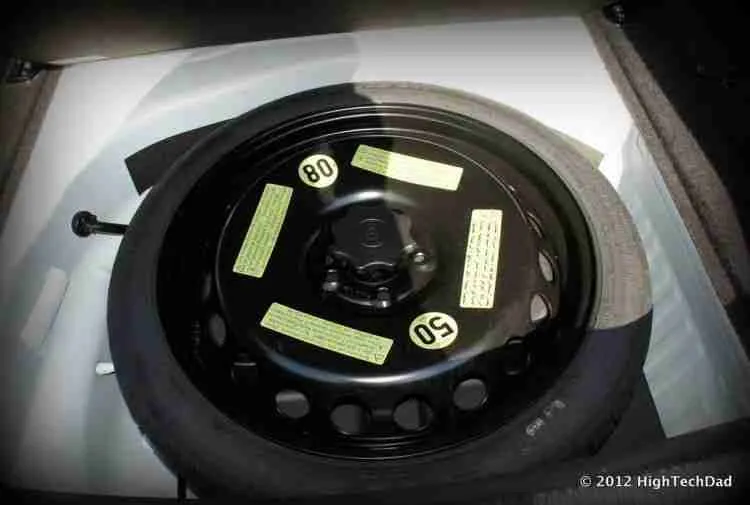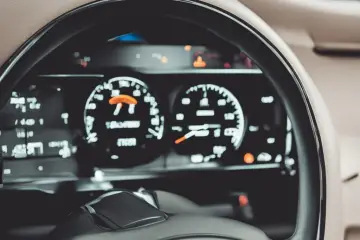How fast can you drive on a spare tire?

The unexpected occurrence of getting a flat tire comes with strain, immediate change of plans, and unforeseen expenses. Once the extra tire is set up, driving your car to the workshop is another ordeal you would have to go through. Now, let us have an in-depth look at the essence of the spare tire, its functionality, and its purpose.
The purpose of extra tires is to assist you in getting to an auto servicing shop close by for a check or replacement of your flat tire. Extra tires are not structured to travel extensively, hence, you should keep to the fifty-mile coverage recommendation when using them. The implications of going on a long mileage with an extra tire is that it could cause gradual harm to the relay and the other parts of your car.
The essence of an extra tire is to help you in your time of need. Therefore, you have to be aware that it cannot function as a substitute and should only be used for a short period. The use of an extra tire is one of the main and crucial benefits of making the use of a car an expedient one because the eventuality of a flat tire occurs when you least expect; so what the extra tire does for you is to buy you some time to get to an auto workshop. The extra tire is not meant to be used as a regular tire.
The use of extra tires and wheels reduces the functionality of the very important car parts like the working of the speedometer, the ABS, and the control of the traction. The funtionality of the brake system and the entire traction of your car will be seriously affected. Therefore, you will have to immensely cut down on your speed, and avoid using it for long or over a far distance.
Oftentimes, it is either you have a compact temporary spare, the ‘donut’, or a ‘non-matching’ extra wheel and tire. The use of the non-matching wheel is gradually becoming popular. Non-matching extra wheels and tires oftentimes are full-size, or just a little smaller in size than the regular tire but the wheel and tire are of a varied description from the four OE wheels and tires.
The reason behind the non-matching full-size extra wheels and tires is that the limitations on them are not much. The vulnerability a car is exposed to when the non-matching extra wheel and tire is used is not much as compared to the compact extra tire. But do not get carried away by the seeming replica looks of this full-size spare and the regular tires because in some cases, non-matching full-size extra tires come in a varied size from the regular tire. Take note that if the extra tire is marked as ‘temporary’ it is less threaded than the regular tires even in the best of conditions!
What Length Of Time Can I Use Driving With An Extra Tire?
The objective of an extra tire is to help get your car to a workshop; it is as simple as that! The length of time you can use driving with an extra tire is very short. Extra tires are not designed with the same structure as the regular tires because they are not built to withstand the level of pressure and rigors a regular tire can bear with great ease. Also note that extra tires are generally smaller than the regular tires, hence the more time you spend driving on them will affect your car alignment negatively which can lead to other functional problems down the line.
Driving Fast On A Spare Tire
The evaluation of extra tires varies and this is specified on its side. All extra tires have a speed limit, however, it is generally known that extra tires should be driven at the range of fifty miles per hour. It is advisable that an extra tire should not be used to travel more than seventy miles. During the use of an extra tire it is advised that you stay on the traffic lane and be careful enough while driving to keep your car straight. You should also be careful enough not to do a sudden turning along the way.
Do You Know About Run-Flat Tires?
These are tires built to be used for a short period of time when it has gone flat. However, just like the extra tire, the limits of the run-flat should not be exceeded. Run-flat tires also cannot be driven faster than fifty miles per hour and generally can only be run for an extra fifty miles. The edge the run-flats have over the extra tire is that you do not have to change it. Make sure you are observant enough to know the type of extra tire that came with your car because some cars come with extra tires that are the same size with your other tires and you can use it assuredly without fear. However, it is important for you to still get to the workshop quickly to repair the flat tire to have a functioning extra tire.
You must be aware because if all your tires are of the same size and you drive a ‘Front-wheel drive’ (FWD). When a flat happens on a driving wheel, you should replace it with a non-driving wheel and not the extra, then put the extra tire where you got the non-driving wheel. This is because of the revolving variation between an extra tire and a regular tire can cause damage. For newbies, Front Wheel Drive FWD simply means that the power generation from the engine is conveyed directly to the front wheels of your car. In FWD cars, the front wheels are doing the major work of pulling the car while the hind wheels just follow the leading of the front wheels. The baseline is that extra tires are remarkable, but are not supposed to be used for a long time or interval.
Conclusion
We know that extra tires come in handy when you get a flat tire all of a sudden; they are not supposed to be a permanent solution. Do not exceed their specified capacity by driving your car at normal speed.













No Comment